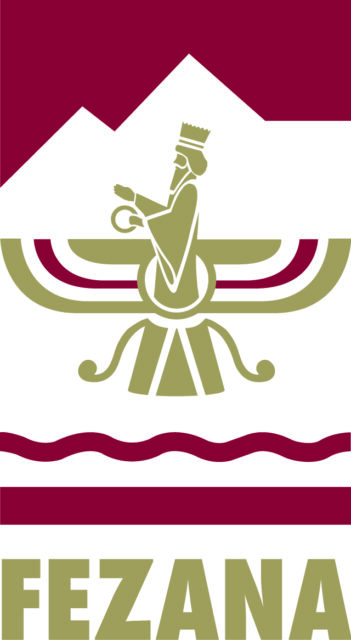Glossary to serve as a valuable resource to the worldwide Zoroastrian community, academic researchers, religious education teachers and the broader public
FEZANA, the Federation of Zoroastrian Associations of North America, today announced the launch of the first-ever Zoroastrian Global Glossary, a legacy project providing global Zoroastrian communities, researchers, religious education teachers and the broader public access to a dynamic portal that provides uniformity for spellings and definitions of Zoroastrian terms in English.
The Global Glossary project arose from the need to unify the spelling of Zoroastrian terms being used in North America. As the FEZANA Religious Education committee began compiling lesson plans for its member communities, it soon became evident that everyone had their own way of spelling terms – validating and providing a rationale for the need to offer uniformity and regularity for future authors, teachers and publications.
“The intention of this glossary is to leave a legacy for future generations,” said the Glossary’s project lead, Armaity Homavazir. “Given our dispersed populations, cultures and languages, we as a collective group were compelled to simplify our body of commonly used terms.”
Homavazir, a Zoroastrian religious education leader and experienced teacher in the greater Toronto area, added that the glossary will remain a working document and that all feedback is welcome and will be honoured in a periodic review by a learned panel to vet suggestions.
Jenny Rose, PhD., an adjunct professor and historian of religions in the Zoroastrian Studies program at Claremont Graduate University, who also holds a doctorate in Ancient Iranian Studies from Columbia University, generously donated her glossaries to help kickstart the project.
“The recently-published FEZANA glossary offers an invaluable resource, not only for the many Zoroastrian communities around the globe, but also for researchers in academic institutions and for the curious public,” Dr. Rose said. “Its comprehensive scope provides an outline of terms encompassing all aspects of the religion, including its cosmology and ethics; its key concepts, prayers, ritual and liturgical practices; its most important texts; significant figures and geographical locations in both the history and the mythical narrative of the religion.”
The Glossary is currently in its first iteration and FEZANA reserves room for updates, additions, corrections and deletions to be incorporated on a rolling basis. Homavazir added that all comments are welcome and can be emailed to [email protected].
“We have in certain cases offered more than one spelling, depending on the term,” Homavazir said. “We have also included the language of origin and attempted to match the English spelling as closely as possible to its original alphabet, whether it be in Avestan, Pahlavi, modern Persian or Gujarati languages.”
FEZANA President Arzan Sam Wadia heralded the creation of the Zoroastrian Global Glossary, recognizing Homavazir for her leadership, and the initiative and hard work of her team to launch the glossary as a legacy project. Team members included: Ervad Zerkxis Bhandara, Artemiz Javanshir, Dr. Ali Makki, and Tashan Mistree.
“We understand this is a significant undertaking and many scholars have included relevant glossaries in their own publications,” Wadia said. “The project also would not have been possible without contributions from Dr. Rose, as well as the FEZANA Journal for its glossary compiled by Dolly Dastoor PhD., and community leader Roshan Rivetna.”
Zoroastrians are followers of one of the world’s oldest monotheistic religions founded by the prophet Zarathushtra more than 3,000 years ago in ancient Iran. Zoroastrians have long served as bridge builders in interfaith dialogue, believing in truth, righteousness, charity, beneficence, respect and care for the environment, and the ultimate triumph of good over evil. Zoroastrianism flourished as the imperial religion of three Persian empires, those of the Achaemenians, Parthians and Sassanians, and was the dominant religion from Turkey and eastward to China during those times. North America’s Zoroastrian community includes those who arrived from the Indian subcontinent, known as Parsis, and those who came directly from Iran seeking religious freedom
###
About FEZANA
Founded in 1987, the Federation of Zoroastrian Associations of North America (FEZANA) represents a diverse and growing Zarathushti community in the western diaspora. Guided by the blessings of Ahura Mazda and the teachings of prophet Zarathushtra, the non-profit federation serves as the coordinating body for 27 Zoroastrian associations and 14 corresponding groups in Canada and the United States. The activities of FEZANA are conducted in a spirit of mutual respect, cooperation and unity among all member associations, and with due regard for the Zarathushti principles of goodness, truth, reason, benevolence, implicit trust and charity toward all mankind. Visit www.fezana.org and follow FEZANA on Instagram, Twitter and Facebook @TheFEZANA.
Contact:
Jim Engineer
FEZANA
6307281387
[email protected]
Disclaimer: The views and opinions expressed in this article are those of the authors and do not necessarily reflect the official policy or position of Religion News Service or Religion News Foundation.





